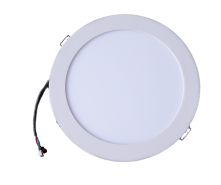During winter, our homes are designed to retain heat and keep the cold air out, which helps with energy efficiency. However, this also means that fresh air circulation is limited, leading to increased concentrations of allergens and pollutants indoors. The following factors contribute to the decline in indoor air quality during the winter season:
Common Sources of Indoor Air Pollution:
- Combustion sources such as oil, gas, kerosene, coal, and wood can contribute to indoor air pollution. Common household appliances like ovens, stoves, heaters, dishwashers, washing machines and dryers fall into this category. It is important to properly maintain and adjust these appliances to prevent the release of harmful pollutants into your home. Heating systems themselves can also be a source of indoor air pollution, which can worsen during winter.
- Building materials, furnishings, and household items like insulation, carpeting, cabinetry, and pressed wood furniture can harbour or release various pollutants such as VOCs, mould, and dust mites.
- Everyday household cleaning products, personal care items, and even air fresheners can continuously release pollutants into the air.
- Engaging in hobbies or home improvement activities like painting, varnishing, sanding, welding, or using adhesives can produce fumes that are detrimental to your health, especially when your home is sealed tightly during winter, restricting the circulation of fresh air.
- Outdoor sources like radon, pollen, lead, and other pollutants can find their way into your home. Radon, a natural decay product of uranium in the soil, can seep into your home. Additionally, pesticides, pollen, lead, and other outdoor pollutants can be tracked inside by people or pets, leading to concentrated levels indoors.
- Pets with fur or feathers can contribute to indoor air pollution through animal dander and other particles. These allergens can aggravate allergies and asthma, particularly in sensitive individuals. As people spend more time indoors, pets that typically venture outside during milder weather conditions also remain indoors, potentially increasing exposure to pet-related pollutants.
Common Household Pollutants
To effectively protect your family from indoor pollution, it’s crucial to understand the most common allergens and pollutants that affect indoor air quality. These include:
- Mould and mildew: When windows are closed to keep out the cold, moisture from activities like bathing and cooking can accumulate indoors. This excess moisture creates a favourable environment for the growth of mould and mildew. These organisms reproduce through airborne spores, which can be easily inhaled.
- Dust mites: As people spend more time indoors, more human skin cells are shed, which increases the concentration of food for dust mites and consequently their population.
- Pet dander: A lightweight and tiny allergen, poses significant challenges for removal. It becomes highly concentrated indoors during winter when both pets and individuals spend increased time indoors.
- Pollen: Although less of an issue in the winter, pollen can still be tracked indoors from some winter-blooming plants. Weather variations may also cause plants to bloom earlier than usual.
- Environmental tobacco smoke (ETS): Second-hand smoke is a significant indoor air pollutant.
- Asbestos: Consisting of resilient and fire-resistant microscopic mineral fibres, can stay suspended in the air and be inhaled due to its lightweight nature. Various household elements like roofing, flooring, insulation, and heating equipment may contain asbestos, posing a risk if disturbed or deteriorated over time.
Asbestos has been banned in Australia since 2003. However, some older buildings may have traces of it.
- Formaldehyde: One of the most prevalent volatile organic compounds (VOCs), which is frequently found in adhesives or other bonding chemicals found in carpet, upholstery, particle board, and plywood panelling.
- Carbon monoxide and nitrogen dioxide: The two worst pollutants released into the air by the combustion sources mentioned above are carbon monoxide and nitrogen dioxide. Carbon monoxide is colourless and odourless, yet it obstructs the body’s ability to distribute oxygen. Poor coordination, headache, nausea, disorientation, nausea, dizziness, and weariness are some of the signs of carbon monoxide poisoning. The gas can also exacerbate cardiovascular disorders. High concentrations can be fatal. Similarly colourless and odourless to air, nitrogen dioxide irritates mucous membranes, particularly those in the nose, throat, and eyes. Breathlessness harmed respiratory tissue, and chronic bronchitis are further side effects.
Effects of Poor Indoor Air Quality
Exposure to indoor air pollution can lead to immediate symptoms such as headaches, dizziness, fatigue, and respiratory irritation (itchy eyes, nose, and throat). It can also exacerbate conditions like asthma and chemical sensitivities. Long-term effects may include respiratory and cardiovascular diseases, as well as an increased risk of cancer.
Improving Indoor Air Quality
The Environmental Protection Agency (EPA) recommends three strategies to enhance indoor air quality: source control, ventilation improvements, and the use of air cleaners or purifiers.
Tips for Maintaining Healthy Indoor Air
- Clean regularly: Dust surfaces, vacuum frequently, and use proper cleaning equipment to reduce airborne pollutants.
- Use carbon monoxide detectors: Install carbon monoxide detectors to alert you to the presence of this odourless and lethal gas.
- Use non-toxic cleaning products: Opt for safer alternatives to chemical-laden cleaning products, especially in winter when ventilation is limited.
- Look for low- or no-VOC products: When engaging in hobbies or home improvement projects, choose products that emit fewer volatile organic compounds.
- Clean and air out mould-prone areas: Regularly clean and ventilate areas prone to mould growth, such as bathrooms, kitchens, and basements.
- Open windows and doors: When weather permits, open windows, and doors to allow fresh air circulation.
- Incorporate air-purifying plants: Certain plants have air-purifying properties and can help absorb toxins from the air.
How Solar Whiz Enhances Indoor Air Circulation in Winter?
Maintaining healthy indoor air quality is crucial for our overall well-being, and one effective way to achieve this is by installing a Solar Whiz ventilation system.
Solar Whiz helps to improve ventilation and air circulation within your home or office space.
By installing Solar Whiz, you can enjoy a multitude of benefits, such as:
- reducing excess humidity
- preventing mould and mildew growth
- and eliminating unpleasant odours
The system works by harnessing solar energy to power the fan, which then draws in fresh air while expelling stale air, contaminants, and pollutants.
This continuous air exchange promotes a healthier environment, reduces the risk of respiratory issues, and enhances overall comfort.
Additionally, Solar Whiz reduces reliance on traditional electrical systems, making it an eco-friendly and cost-effective choice for maintaining clean and fresh indoor air.
Conclusion
Maintaining clean indoor air begins with understanding where indoor contaminants come from, what they are, and how to eliminate them. Winter is a season to be especially watchful about maintaining good indoor air quality because of the combined effects of more time spent indoors and decreased ventilation.
Stay vigilant year-round. Indoor air quality should be a priority throughout the year, not just during winter.
Frequently Asked Questions
What are the effects of poor indoor air quality?
Poor indoor air quality can lead to immediate symptoms such as headaches, dizziness, fatigue, and respiratory irritation. Long-term effects may include respiratory and cardiovascular diseases, as well as an increased risk of cancer.
How can I improve indoor air quality during winter?
The EPA recommends three strategies: source control, ventilation improvements, and the use of air cleaners. Regular cleaning, installing carbon monoxide detectors, choosing non-toxic cleaning products, and proper ventilation are essential for maintaining healthy indoor air.
What are the most common indoor pollutants to be aware of?
Common indoor pollutants during winter include mould and mildew, dust mites, pet dander, pollen, environmental tobacco smoke, asbestos, formaldehyde, carbon monoxide, and nitrogen dioxide. Understanding these allergens and pollutants is crucial for maintaining clean indoor air.
What are the common sources of indoor air pollution during winter?
During winter, combustion sources like heating systems, household appliances, and building materials can worsen indoor air quality. Outdoor pollutants, pets, and everyday products also contribute to increased concentrations of allergens and pollutants.
How does Solar Whiz enhance indoor air circulation in winter?
Solar Whiz improves indoor air quality by reducing excess humidity, preventing mould growth, and eliminating odours. It harnesses solar energy to draw in fresh air while expelling pollutants, promoting a healthier environment and reducing reliance on traditional electrical systems.





